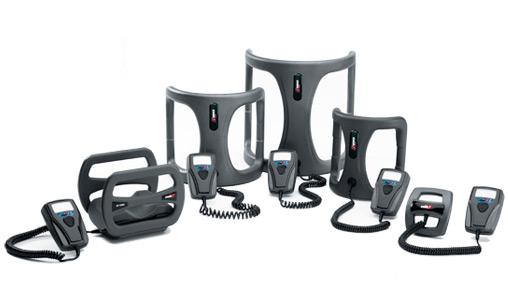Jones fractures
A Jones fracture is a specific type of foot bone fracture involving the break of the fifth metatarsal (the bone between the smallest toe and ankle). Overuse and stress on the foot can cause a Jones fracture resulting in a wound that may get worse over time. These fractures can be caused by walking, jumping, or running. A sudden and acute injury to the foot can also cause a Jones fracture. An example of this is a turned or rolled ankle. Jones fractures frequently affect professional athletes. Unfortunately, it is more difficult for a Jones fracture to heal because this area receives less blood than other regions of the foot. If the Jones fracture becomes nonunion (i.e. the healing process stops), surgery is the usual course. However, less invasive nonsurgical options are also available [1].
Surgical options for Jones fractures
There are surgical options for Jones fractures. The most popular technique is intramedullary screw fixation. This is a surgery that involves placing a screw lengthwise within the bone. Fractures of the shaft of the metatarsal are also fixed with a plate and screws. These surgeries can be performed under regional or general anesthesia, and the patient can usually go home the same day [1]. For patients abstaining from surgery alternative bone healing methods are available. Research has shown that bone growth stimulation devices are an effective substitute for surgery [2].
Healing Jones fractures with bone growth stimulators
One option for treating a Jones fracture is a bone growth stimulation device. This device may be used either as an alternative to surgery or as a follow-up treatment after surgery. Bone growth stimulation is a treatment option that promotes the healing of fractures, particularly nonunion fractures. These devices work by administering either electrical, electromagnetic, or ultrasonic pulses to the fractured area to promote healing. Scientific research supports the use of treating Jones fractures with bone growth stimulators. For instance, one study shows that low intensity pulsed ultrasonic (LIPUS) technology has the ability to heal an athlete’s Jones fracture [3]. Another older study supports the use of pulsed electromagnetic field (PEMF) bone growth stimulators for the treatment of Jones fractures [2].
Bone growth stimulators and criteria for insurance
Certain criteria must be met to receive bone growth stimulator coverage by your insurance provider. The guidelines for determining whether a bone growth stimulation device is covered depends on your particular insurance provider. For instance, for individuals covered by Anthem BlueCross, the following conditions must be met before an electrical bone growth stimulator will be covered: at least 45 days have passed since the date of fracture or the date of surgical treatment of the fracture; serial radiographs or other imaging studies were performed to confirm that no progressive signs of healing have occurred; and the fracture gap is less than 1 centimeter [4]. In order for these conditions to be met, you must provide official medical documentation to your insurance provider.
The type of bone growth stimulator will also affect criteria for insurance. For example, if electrical or electromagnetic bone growth stimulation is sought and the insurance provider is United Healthcare, official medical notes documenting all of the following must be provided: 1) current physician prescription or order; 2) documentation explaining the reason a bone growth stimulator is needed; 3) any risk factors that apply (such as obesity or smoking) [5]. You can find out more about general insurance criteria for coverage for many providers here. Determining your health insurance coverage is essential in order to estimate bone stimulator costs.
References
[1] Roche AJ, Calder JD. Treatment and return to sport following a Jones fracture of the fifth metatarsal: a systematic review. Knee Surgery, Sports Traumatology, Arthroscopy. 2013;21(6):1307-15.
[2] Holmes Jr GB. Treatment of delayed unions and nonunions of the proximal fifth metatarsal with pulsed electromagnetic fields. Foot & ankle international. 1994;15(10):552-6.
[3] Conner C. Use of an Ultrasonic Bone-Growth Stimulator to Promote Healing of a Jones Fracture. International Journal of Athletic Therapy and Training. 2003;8(1):37-9.
[4} Noninvasive Electrical Bone Growth Stimulation of the Appendicular Skeleton. 2019. Accessed 8/29/2020. www.anthem.com/dam/medpolicies/abc/active/guidelines/gl_pw_d055254.html
[5] Electrical and Ultrasound Bone Growth Stimulators. 2020. Accessed 8/29/2020. https://www.uhcprovider.com/content/dam/provider/docs/public/policies/comm-medical-drug/electrical-ultrasound-bone-growth-stimulators.pdf
